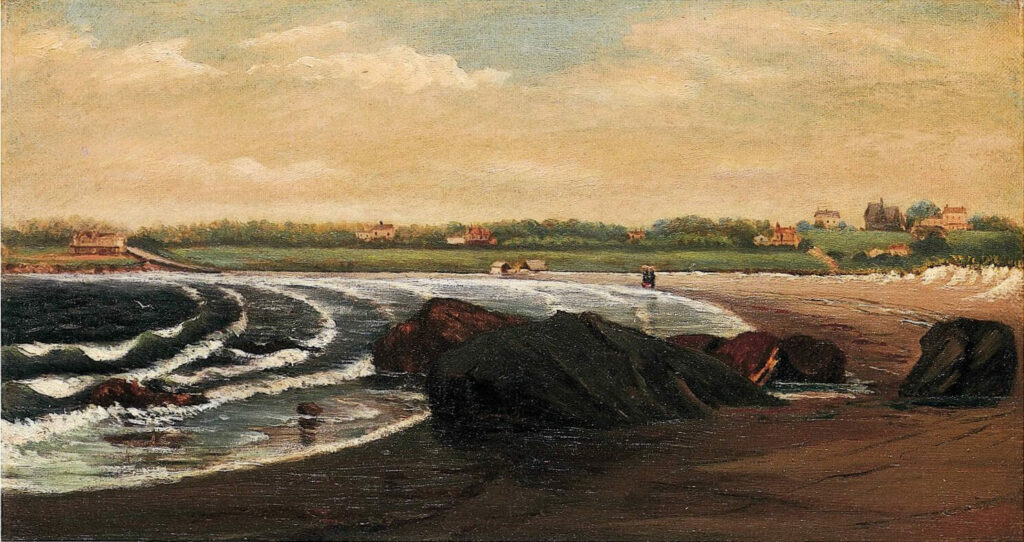After growing up in New Brunswick, Bannister moved to Boston around 1850. This picturesque scene of the Rhode Island seashore is one of his earliest surviving works. The rippling tide, gliding around dark rocks in the foreground, generates a gentle rhythm with its concentric curving lines. In the distance, a pair of figures stand at the edge of the water, admiring its beauty. The painting suggests the influence of contemporary American artists whose work Bannister may have come across during his visits to the Boston Athenaeum, notably Fitz Hugh Lane (1804–1865) and John Frederick Kensett (1816–1872). Because of Bannister’s race, established White artists refused to accept him as their student. Consequently, he studied art independently by visiting museums and interacting with other local artists.
Artist and Abolitionist
-
Edward Mitchell Bannister, Untitled (Rhode Island Seascape), c.1856
Oil on canvas, 45.7 x 55.9 cm, Collection of Kenkeleba House, New York.
